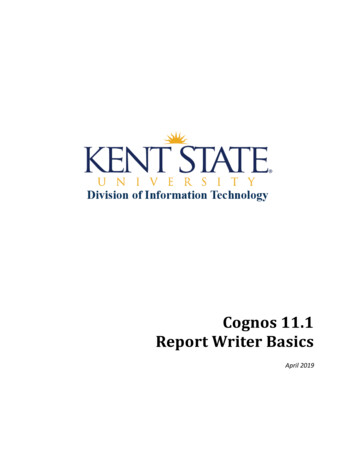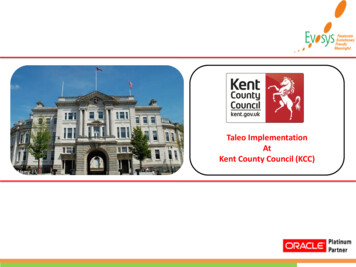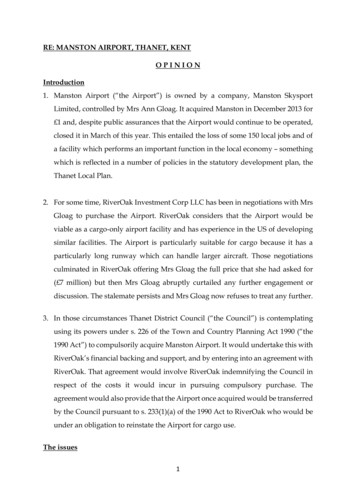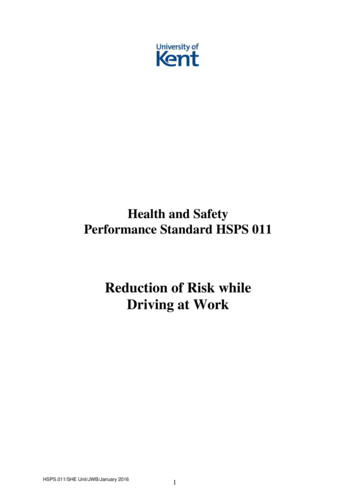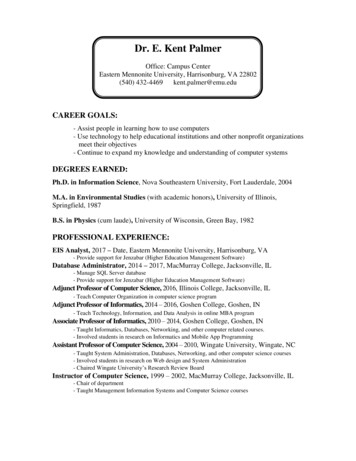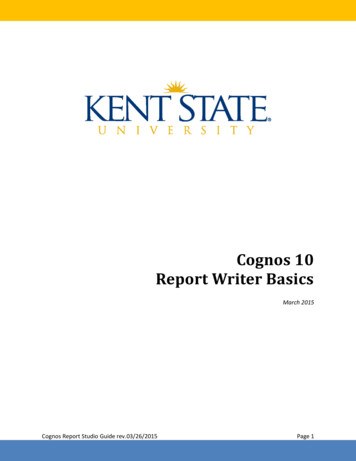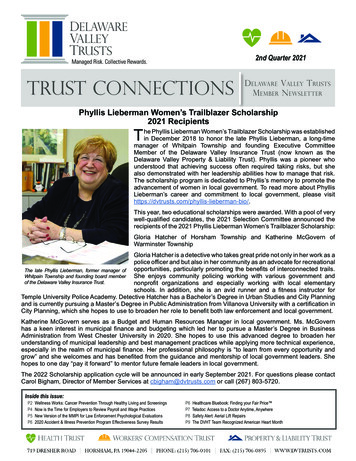
Transcription
Fundamentals of Mathematics IKent State Department of Mathematical SciencesFall 2008Available ugust 4, 2008
Contents1 Arithmetic1.1 Real Numbers . . . . . . . . . . . .1.1.1 Exercises 1.1 . . . . . . . .1.2 Addition . . . . . . . . . . . . . .1.2.1 Exercises 1.2 . . . . . . . .1.3 Subtraction . . . . . . . . . . . . .1.3.1 Exercises 1.3 . . . . . . . .1.4 Multiplication . . . . . . . . . . .1.4.1 Exercises 1.4 . . . . . . . .1.5 Division . . . . . . . . . . . . . . .1.5.1 Exercise 1.5 . . . . . . . . .1.6 Exponents . . . . . . . . . . . . .1.6.1 Exercises 1.6 . . . . . . . .1.7 Order of Operations . . . . . . . .1.7.1 Exercises 1.7 . . . . . . . .1.8 Primes, Divisibility, Least Common1.8.1 Exercises 1.8 . . . . . . . .1.9 Fractions and Percents . . . . . . .1.9.1 Exercises 1.9 . . . . . . . .1.10 Introduction to Radicals . . . . . .1.10.1 Exercises 1.10 . . . . . . . .1.11 Properties of Real Numbers . . . .1.11.1 Exercises 1.11 . . . . . . . . . . . . . . . . . . . . . . . . . . . . . . . . . . . . . . . . . . . . . . . . . . . . . . . . . . . . . . . . . . . . . . . . . . . . . . . . . . . . . . . . . . . . . . . . . . . . . . . . . . . . . . . . . . . . . . . . . . . . . . . . . . . . . . . . . . . . . . . . . . . . . . . . . . . . . . . . . . . . . . . . . . . . . . . . . . . . . . . . . . . . . . . . . . . . . . . . . . . . . . . . . . . . . . . . . . . . . . . . . . . . . . . . . . . . . . . . . . . . . . . . . . . . . . . . . . . .Denominator, Greatest Common. . . . . . . . . . . . . . . . . . . . . . . . . . . . . . . . . . . . . . . . . . . . . . . . . . . . . . . . . . . . . . . . . . . . . . . . . . . . . . . . . . . . . . . . . . . . . . . . . . . . . . . . . . . . . . . . . . . . . . . . . . . . . . . . . . . . . . . . . . . . . . . . . . . . . . . . . . . . . . . . . . . . . . . . .Factor. . . . . . . . . . . . . . . . . . . . . .2277121219192323282831313334404050515353572 Basic Algebra2.1 Combining Like Terms . . . . . . .2.1.1 Exercises 2.1 . . . . . . . .2.2 Introduction to Solving Equations2.2.1 Exercises 2.2 . . . . . . . .2.3 Introduction to Problem Solving .2.3.1 Exercises 2.3 . . . . . . . .2.4 Computation with Formulas . . . .2.4.1 Exercises 2.4 . . . . . . . .585860606566717176.3 Solutions to Exercises.771
Chapter 1Arithmetic1.1Real NumbersAs in all subjects, it is important in mathematics that when a word is used, an exact meaning needs to be properlyunderstood. This is where we will begin.When you were young an important skill was to be able to count your candy to make sure your sibling did not cheat youout of your share. These numbers can be listed: {1, 2, 3, 4, .}. They are called counting numbers or positive integers.When you ran out of candy you needed another number 0. This set of numbers can be listed {0, 1, 2, 3, .}. They arecalled whole numbers or non-negative integers. Note that we have used set notation for our list. A set is just acollection of things. Each thing in the collection is called an element or member the set. When we describea set by listing its elements, we enclose the list in curly braces, ‘{}’. In notation {1, 2, 3, .}, the ellipsis, ‘.’,means that the list goes on forever in the same pattern. So for example, we say that the number 23 is anelement of the set of positive integers because it will occur on the list eventually. Using the language of sets,we say that 0 is an element of the non-negative integers but 0 is not an element of the positive integers. Wealso say that the set of non-negative integers contains the set of positive integers.As you grew older, you learned the importance of numbers in measurements. Most people check the temperature beforethey leave their home for the day. In the summer we often estimate to the nearest positive integer (choose the closestcounting number). But in the winter we need numbers that represent when the temperature goes below zero. We canestimate the temperature to numbers in the set {., 3, 2, 1, 0, 1, 2, 3, .}. These numbers are called integers.The real numbers are all of the numbers that can be represented on a number line. This includes the integers labeledon the number line below. (Note that the number line does not stop at -7 and 7 but continues on in both directions asrepresented by arrows on the ends.)To plot a number on the number line place a solid circle or dot on the number line in the appropriate place.Examples: Sets of Numbers & Number LineExample 1Solution:Plot on the number line the integer -3.Practice 2Plot on the number line the integer -5.Solution: Click here to check your answer.2
Example 3Of which set(s) is 0 an element: integers, non-negative integers or positive integers?Solution: Since 0 is in the listings {0, 1, 2, 3, .} and {., 2, 1, 0, 1, 2, .} but not in {1, 2, 3, .}, it is an element of theintegers and the non-negative integers.Practice 4Of which set(s) is 5 an element: integers, non-negative integers or positive integers?Solution: Click here to check your answer.When it comes to sharing a pie or a candy bar we need numbers which represent a half, a third, or any partial amountthat we need. A fraction is an integer divided by a nonzero integer. Any number that can be written as a fraction is calleda rational number. For example, 3 is a rational number since 3 3 1 31 . All integers are rational numbers. Noticethat a fraction is nothing more than a representation of a division problem. We will explore how to convert a decimal to afraction and vice versa in section 1.9.Consider the fraction 21 . One-half of the burgandy rectangle below is the gray portion in the next picture. It representshalf of the burgandy rectangle. That is, 1 out of 2 pieces. Notice that the portions must be of equal size.Rational numbers are real numbers which can be written as a fraction and therefore can be plotted on a number line. Butthere are other real numbers which cannot be rewritten as a fraction. In order to consider this, we will discuss decimals. Ournumber system is based on 10. You can understand this when you are dealing with the counting numbers. For example, 10ones equals 1 ten, 10 tens equals 1 one-hundred and so on. When we consider a decimal, it is also based on 10. Consider thenumber line below where the red lines are the tenths, that is, the number line split up into ten equal size pieces between 0and 1. The purple lines represent the hundredths; the segment from 0 to 1 on the number line is split up into one-hundredequal size pieces between 0 and 1.As in natural numbers these decimal places have place values. The first place to the right of the decimal is the tenthsthen the hundredths. Below are the place values to the millionths.tens: ones: . : tenths: hundredths: thousandths: ten-thousandths: hundred-thousandths: millionthsThe number 13.453 can be read “thirteen and four hundred fifty-three thousandths”. Notice that after the decimalyou read the number normally adding the ending place value after you state the number. (This can be read informally as“thirteen point four five three.) Also, the decimal is indicated with the word “and”. The decimal 1.0034 would be “one andthirty-four ten-thousandths”.Real numbers that are not rational numbers are called irrational numbers. Decimals that do not terminate (end) orrepeat represent irrational numbers. The set of all rational numbers together with the set of irrational numbers is calledthe set of real numbers. The diagrambelowshows the relationship between the sets of numbers discussed so far. Some examples of irrational numbers are 2, π, 6 (radicals will be discussed further in Section 1.10). There are infinitely manyirrational numbers. The diagram below shows the terminology of the real numbers and their relationship to each other.All the sets in the diagram are real numbers. The colors indicate the separation between rational (shades of green) andirrational numbers (blue). All sets that are integers are in inside the oval labeled integers, while the whole numbers containthe counting numbers.3
Examples: Decimals on the Number LineExample 5a) Plot 0.2 on the number line with a black dot.b) Plot 0.43 with a green dot.Solution: For 0.2 we split the segment from 0 to 1 on the number line into ten equal pieces between 0 and 1 and then countover 2 since the digit 2 is located in the tenths place. For 0.43 we split the number line into one-hundred equal pieces between0 and 1 and then count over 43 places since the digit 43 is located in the hundredths place. Alternatively, we can split upthe number line into ten equal pieces between 0 and 1 then count over the four tenths. After this split the number line upinto ten equal pieces between 0.4 and 0.5 and count over 3 places for the 3 hundredths.Practice 6a) Plot 0.27 on the number line with a black dot.b) Plot 0.8 with a green dot.Solution: Click here to check your answer.Example 7a) Plot 3.16 on the number line with a black dot.b) Plot 1.62 with a green dot.Solution: a) Using the first method described for 3.16, we split the number line between the integers 3 and 4 into one hundredequal pieces and then count over 16 since the digit 16 is located in the hundredths place.4
b) Using the second method described for 1.62, we split the number line into ten equal pieces between 1 and 2 andthen count over 6 places since the digit 6 is located in the tenths place. Then split the number line up into ten equal piecesbetween 0.6 and 0.7 and count over 2 places for the 2 hundredths.Practice 8a) Plot 4.55 on the number line with a black dot.b) Plot 7.18 with a green dot.Solution: Click here to check your answer.Example 9a) Plot -3.4 on the number line with a black dot.b) Plot -3.93 with a green dot.Solution: a) For -3.4, we split the number line between the integers -4 and -3 into one ten equal pieces and then count to theleft (for negatives) 4 units since the digit 4 is located in the tenths place.b) Using the second method, we place -3.93 between -3.9 and -4 approximating the location.Practice 10a) Plot -5.9 on the number line with a black dot.b) Plot -5.72 with a green dot.Solution: Click here to check your answer.Often in real life we desire to know which is a larger amount. If there are 2 piles of cash on a table most people wouldcompare and take the pile which has the greater value. Mathematically, we need some notation to represent that 20 isgreater than 15. The sign we use is (greater than). We write, 20 15. It is worth keeping in mind a little memorytrick with these inequality signs. The thought being that the mouth always eats the larger number.This rule holds even when the smaller number comes first. We know that 2 is less than 5 and we write 2 5 where indicates“less than”. In comparison we also have the possibility of equality which is denoted by . There are two combinations thatcan also be used less than or equal to and greater than or equal to. This is applicable to our daily lives when we considerwanting “at least” what the neighbors have which would be the concept of . Applications like this will be discussed later.When some of the numbers that we are comparing might be negative, a question arises. For example, is 4 or 3greater? If you owe 4 and your friend owes 3, you have the larger debt which means you have “less” money. So, 4 3.When comparing two real numbers the one that lies further to the left on the number line is always the lesser of the two.Consider comparing the two numbers in Example 9, 3.4 and 3.93.Since 3.93 is further left than 3.4, we have that 3.4 3.93 or 3.4 3.93 are true. Similarly, if we reverse the orderthe following inequalities are true 3.93 3.4 or 3.93 3.4.Examples: Inequalities5
Example 11State whether the following are true:a) 5 4b) 4.23 4.2Solution:a) True, because 5 is further left on the number line than 4.b) False, because 4.23 is 0.03 units to the right of 4.2 making 4.2 the smaller number.Practice 12State whether the following are true:a) 10 11b) 7.01 7.1Solution: Click here to check your answer.Solutions to Practice Problems:Practice 2Back to TextPractice 4Since 5 is in the listings {0, 1, 2, 3, .}, {., 2, 1, 0, 1, 2, .} and {1, 2, 3, .}, it is an element of the non-negative integers(whole numbers), the integers and the positive integers (or counting numbers). Back to TextPractice 6Back to TextPractice 8Back to TextPractice 10Back to TextPractice 12Solution:a) 10 11 is true since 11 is further left on the number line making it the smaller number.b) 7.01 7.1 is true since 7.01 is further left on the number line making it the smaller number.Back to Text6
1.1.1Exercises 1.1Determine to which set or sets of numbers the following elements belong: irrational, rational, integers, whole numbers,positive integers. Click here to see examples.1. 132. 50 4. 3.55. 15Plot the following numbers on the number line. Click here to see examples.3. 126. 5.3337. 98. 910. 3.4711. 1.23State whether the following are true: Click here to see examples.9. 012. 5.1113. 4 416. 30.5 30.0514. 5 217. 4 415. 20 1218. 71.24 71.2Click here to
Examples: Decimals on the Number Line Example 5 a) Plot 0.2 on the number line with a black dot. b) Plot 0.43 with a green dot. Solution: For 0.2 we split the segment from 0 to 1 on the number line into ten equal pieces between 0 and 1 and then count

